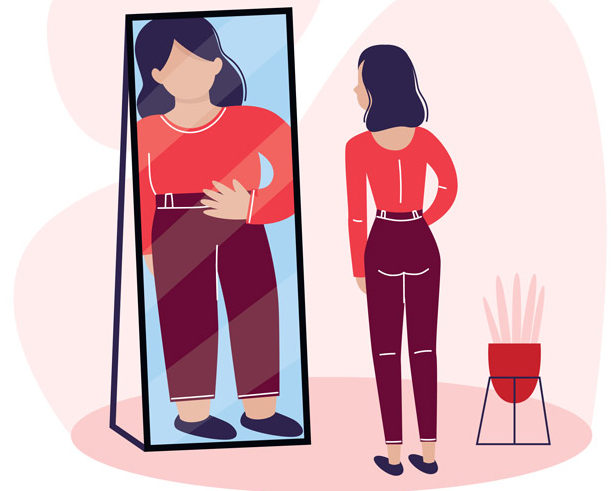Over the past few years, there has been an increase in the portrayal of eating disorders throughout the media. Popular movies such as ‘To the Bone,’ ‘Girl, Interrupted,’ and ‘Heathers,’ are just a few of the many examples of light being shed on a previously overlooked issue. However, this light has led to a stereotype and somewhat glorification of the very serious topic of eating disorders.
When people think of someone struggling with an eating disorder, the most commonly thought of stereotype is someone who is severely underweight and skeletal-like looking. This is more likely than not, the way movies and television portray someone suffering from an ED (eating disorder), which is a damaging thing to have been done as it is proven that eating disorders come in all different shapes and sizes. The three most common eating disorders are anorexia, bulimia, and binge eating disorder. Portrayal of binge eating disorder has only really been appealed to people who are overweight, while anorexia and bulimia have only been applied to people who are underweight, which leads to the misconception that people who are overweight can not and do not suffer from anorexia or bulimia and that people who are underweight can not and do not suffer from BED (binge eating disorder). This is ultimately very untrue and this arrogance has undermined many people and their struggles. Another group of people who have been undermined by the portrayal of eating disorders is men. A second very popular misconception is that only women suffer from eating disorders, but studies have shown that 5% of people who have anorexia are men, 20% of people with bulimia are men, and 50% of people with binge eating disorder are men. This belief that only ‘thin’ women can suffer from anorexia and bulimia, and that only ‘fat’ women can suffer from binge eating disorder, has come up and been popularized by the media.
By the media shedding light on eating disorders and the struggles people with eating disorders go through, a glorification has also arisen. Although overlooked, eating disorders have been around for a long time, but social media over the years has increased the awareness of it through allowing people to post explicit images and videos on ways to lose weight unhealthily and promote quotes like “nothing tastes as good as skinny feels.” Tumblr is responsible for most of the glorification of eating disorders and other health issues. For example, “pro ana” and “pro mia” were trends on Tumblr, Twitter, Instagram, and more which referred to content that promoted the harmful behaviour and mindset that forms part of some eating disorders. Many young girls and boys fell into a hole of pro ana, referring to anorexia, and pro mia, referring to bulimia, causing them to want to try this ‘lifestyle’ that was being romanticized to them through social media. What these trends failed to mention is the scary reality of eating disorders. It was thought to just be a quick way to lose weight and a way to fit in, nobody thought about the immense health effects that ED’s would lead to. Eating disorders are glorified until it is recognized that your nails will be become brittle, you will be cleaning out chunks of your hair after every shower, you’re cold all the time due to the drop in body temperature, breathing becomes harder, your skin is flaky, your heart rate slows down, gum disease, your esophagus tearing, and many more deathly effects. Social media is dangerous in the sense that people are exposed to new ways and ideas of coping that are not necessarily helpful, rather they are extremely harmful to the viewers physically and mentally.
It is great that the media has acknowledged the very pressing issue of eating disorders and their serious health effects, but the portrayal has done nothing but damage. People with eating disorders are going unnoticed and undiagnosed because they don’t fit a specific stereotype. It is also not uncommon for people to not see the big deal of eating disorders because of the glorification that surrounds them. Eating disorders should be taken seriously and can affect anybody, nobody what they look like or who they are.
